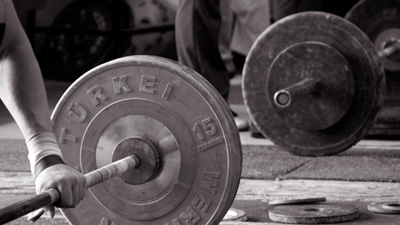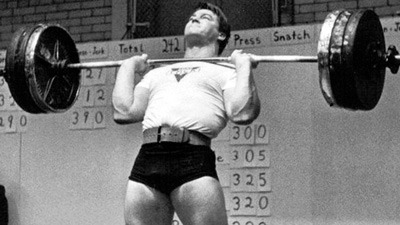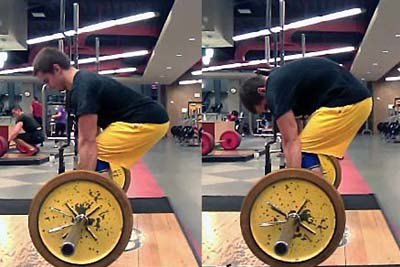There’s a lot of factors that go into your progress at the gym.
When it comes to getting stronger, everything from you diet to your routine to your sleeping habits come into play.
Yes, getting stronger and building muscle are inherently linked together. Once you’ve maximized your neural gains—the progress you can make as a result of your nervous system becoming more adept at performing a particular exercise—the only way to get stronger is by building more muscle.
And, vice versa, getting stronger is the primary stimulus your body needs to synthesize new muscle tissue.
While eating a proper diet and getting quality rest are both absolutely crucial for bulking up and getting stronger, in this article I’ll talk about specific training techniques you should be using.
1. Squeeze the shit out of the bar

The strength of your grip is more important than you may think
For just about every exercise I can think of, it pays to grip the bar as firmly as possible.
When it comes to improving your bench press, this will help keep the wrists straight, protecting them from injury, and it will help you fully contract your triceps, chest, and lats for a stronger and more stable press. When it comes to improving your squat, this will help you keep your chest open and contract your lats for a more stable and safe squat. If you’re curling it will keep your from curling our wrists instead of our arms and keep your wrists safer as a result.
One exception I can think of for this is if you’re doing an olympic lift or front squat and holding the bar in the rack position. In this case your grip is loose to allow your elbows to be held high in front of you.
2. Take huge breaths
Taking huge breaths that fill up your stomach and chest with air is doubly important:
- It will expand your chest and allow you to hold your shoulder blades back in a neutral position so that you can keep an strong, straight back
- It will make contracting your abdominal muscles easier, as breathing into your stomach forces you to utilize the full length of your diaphragm
By taking advantage of these two factors you’ll maintain better posture and a tighter core – adding more stability and strength to your exercises.
Note: It’s also important to time your breaths correctly. Inhaling at the beginning of a repetition and holding it in to maintain tension until you near the completion of the repetition.
3. Focus on compound movements

Compound movements like the overhead press are best for building muscle
Compound movements are movements that recruit more than one major muscle group to complete. Some common examples are squats, deadlifts, presses, and pull-ups.
These are best because they allow you to move the most weight – you simply can’t curl as much as you can row, for example. And using more weight is what allows you to get stronger… and as we talked about in the intro, getting stronger is what allows you to build muscle.
Around 75% of your time in the gym should be spend doing these types of movements. The other 25% can be used for isolation movements that work your arms and abs. And this is why I advocate full-body routines that focus on the compound lifts.
4. Track your progress
This point is simple yet often ignored. Keeping track of how much weight you lifted and for how many reps is extremely simple. Yet without doing it you have no way of knowing if you’re making progress. And you have no idea what you should be aiming to lift each time you’re in the gym.
In short, this is probably the biggest mistake you can on your muscle building journey, especially make given how easy it is.
5. Keep your back straight

Keeping your back straight is crucial, and not just when deadlifting
Keeping a straight back is a key part of nearly every exercise.
Allow your back to round (as seen above on the right) is a quick way to herniate a disc and get hurt. Not to mention it also will prevent you from aligning your body in an optimal position to move the most weight. By breathing correctly (as mentioned above) and training yourself to keep your shoulder blades back and your stomach tight you should be able to maintain an erect back as you execute most movements.
6. Use an explosive repetition tempo
When it comes to repetition tempo, I recommend lifting the weight as fast as possible… on the way up at least (during the concentric portion of the lift). On the way down you should lower the weight (if you’re doing an exercise like the bench press or deadlift) or your body (if you’re doing an exercise like a squat or pull-up) in a slow, controlled manner.
Using this tempo (fast on the way up, slow on the way down) accomplishes two things:
- By lowering the weight slowly, you ensure that you’re using a weight that’s not too heavy for you
- By lifting the weight explosively, you activate a maximum number of motor units and muscle fibers, and this leads to optimal muscle growth and strength increase
Read More: The Top 3 Muscle Building Mistakes Men Make